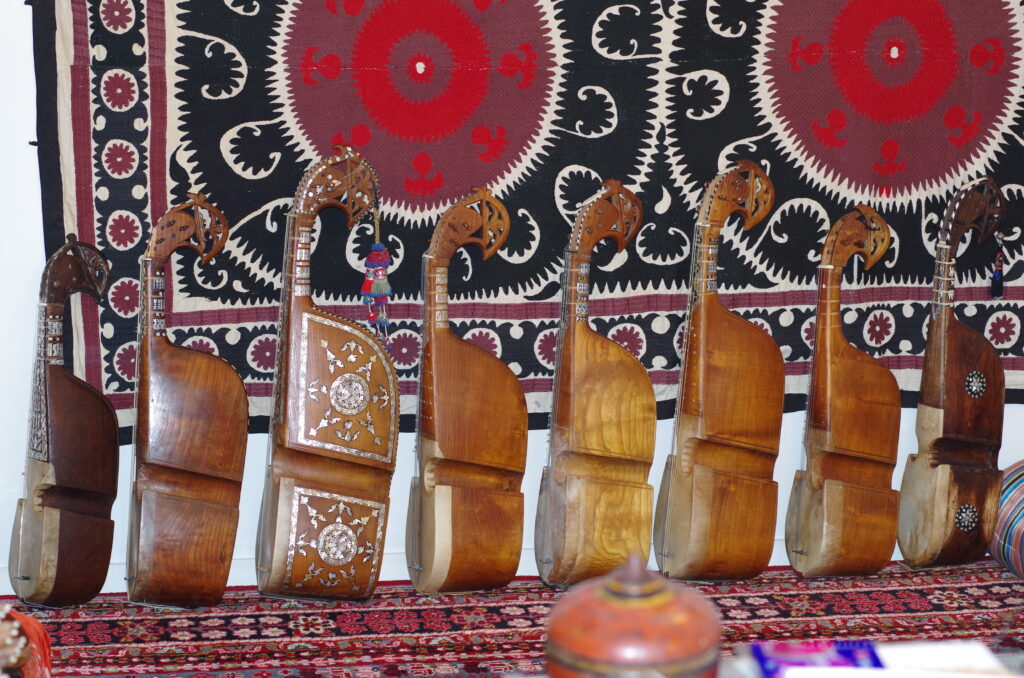About the Afghan Rubāb

The origins of Afghan Rubāb
The Afghan rubāb is a member of the rubāb family of lutes. Rubāb-type instruments are lutes from Central Asia whose soundboard is made of parchment skin and whose strings are plucked with a plectrum. There is a wide variety of rubāb lutes, some with the name rubāb, others with a completely different name, such as the Pamiri tanbur or the Dolan rawap Although they have different names, these instruments belong to the rubāb family. The number of strings on the rubāb can vary, from 2 to 21, and sometimes more.
The Spiritual Dimension of the Afghan Rubāb
The Afghan rubāb has several symbols evoking paradise. The mulberry tree, the wood from which it is carved, is considered by the people of Afghanistan and certain regions of Transoxiana to evoke the ‘tree of life’. This tree is often represented on the fingerboard of the instrument by an assembly of small inlaid pieces of bone or mother-of-pearl. Birds, in this case the peacock, can also be seen on the fingerboard or on the sides of the instrument. The pegbox has a rounded shape symbolising the animal's body, and some makers go so far as to depict its eyes on top of a beak, while others carve peacocks inside the scroll of the pegbox in place of the cotton flower. For some musicians, the 'V' shape on the back of the resonator represents the folded wings of the bird; it could be the stiff barbs of its plumage. Others see it as a floral motif, or the roots of the ‘tree of life’. The sides of the instrument may also be decorated, with circular motifs representing the starry sky. All these decorative elements evoke the original garden. The tone produced by the sympathetic strings reinforces this imaginary world, and the halo of sound can be likened to ‘magic’ in that the strings sound without even being touched. Do they not represent ‘the voice of angels’? The voice of the Afghan rubāb embodies the poetry of Rūmī and Alishir Navā'i like no other instrument; it moves its audience right up to the gateway to paradise. Paradoxically, the musicians who play the instrument seem to have completely forgotten the meaning of these symbols. The instrument makers reproduce the decorations out of habit, without really realising the mystical significance of their work. What are the reasons for this amnesia? Could it be due to the illicit nature of music, as promoted by fundamentalists and their interpretation of the Koran? The situation is all the more acute in Afghanistan, where musicians, luthiers and musicians are closely related to the salmāni.
Would you like to talk to me?
Follow the link below to send us a message.